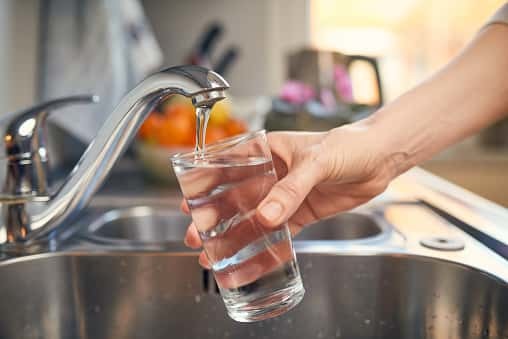What is the Difference Between Reverse Osmosis and Carbon Filtration?
Are you considering investing in a home water filter? You have many options to choose from, but two of the most common are reverse osmosis and carbon filtration. What’s the difference between the two, and how do you decide which one is right for your home? Use the information here to guide your decision.

Why Use a Filter at All?
When you turn on a faucet, you expect clean, clear water to flow out, no questions asked. After all, the municipal water supply undergoes treatment before traveling back to your home, and the EPA monitors public water quality.
Unfortunately, tap water isn’t always as clean as you expect. Dissolved solids, heavy metals, chemicals, salts, microorganisms, and more may leach into the water supply on its way to your home. These contaminants can give your water a bad taste, cause a cloudy appearance, or even make you sick.
This is why more and more Texas homeowners are installing home water filters. By removing contaminants directly from the tap, you can rest assured that your family’s drinking water is as clean as possible.
Reverse Osmosis
Reverse osmosis (RO) filters are based on a process that occurs within the anatomy of many animals. The human-made version uses a highly compact, semi-permeable membrane to achieve thorough filtration.
Reverse osmosis membranes are almost always coupled with other filtration stages. One configuration involves using a pre-filter to remove sediment, particles, and chlorine, followed by the RO membrane itself and a post-filter to remove odors and improve the taste.
The biggest drawback of RO filtration is that it creates water waste. The system must routinely rinse the membrane, generating contaminant-heavy water, which is then flushed away. This increased water usage, combined with the RO filter’s overall complexity, makes it one of the more expensive ways to clean your tap water.
Homeowners should also know that bacterial growth is possible on the reverse osmosis membrane. While advancements have been made to keep this problem in check, it’s important to clean the membrane frequently to prevent contaminating your family’s water. This is as simple as adding commercially available sanitation products to the RO tank.
What Does Reverse Osmosis Remove from Tap Water?
Reverse osmosis can filter out up to 99% of contaminants as small as 0.001 microns—that’s 100,000 times thinner than a human hair! The specific contaminants RO filtration can remove include:
- Nitrates
- Salts
- Fluoride
- Arsenic
- Heavy metals (copper, lead, mercury, zinc, cobalt, nickel)
- Minerals that cause hard water (calcium and magnesium)
- Bacteria (salmonella, shigella, E. coli)
- Viruses (norovirus, hepatitis A, rotavirus)
- Protozoa (giardia, cryptosporidium)
Be aware that reverse osmosis is less effective at removing volatile organic compounds (VOCs), trihalomethanes (THMs), solvents, and chlorine. However, you can improve chlorine removal by combining reverse osmosis with a carbon block pre-filter.
Carbon Filtration
Carbon-based water filters have been used to purify water for centuries. It’s believed that ancient Egyptians invented the earliest form of activated carbon with the discovery of charcoal.
Today, carbon filters are created by heating carbonaceous materials such as coal, wood, bamboo, or coconut shells. Materials are placed in nitrogen- or argon-filled chambers and heated to a high temperature. This “activates” the carbon, giving it a positive charge and making it incredibly porous. These properties of activated carbon make it a sort of magnet, attracting negatively charged contaminants at the molecular level and absorbing them into millions of tiny pores.
Activated carbon filters are the most common medium used in home water filtration systems. The larger the surface area of the filter, the more contaminants it can absorb, and therefore the more effective the filtration.
What Contaminants Do Carbon Filters Remove?
Carbon-based filters come in many forms, with ratings ranging from 50 microns down to 0.5 microns. The degree of filtration also depends on how many layers are used. In most residential applications, carbon filters are one to two layers thick. Despite these varying factors, all carbon filters are effective at removing the following:
- Dirt and sediment
- Chlorine and chlorination byproducts
- VOCs (benzene, toluene)
- Fuel, oil, and solvents
- Polychlorinated biphenyls (PCBs)
- Radon, dioxins, and radioactive materials
- Pesticides and herbicides
Be aware that carbon filtration does not target heavy metals or microorganisms and only removes about 10% of dissolved solids.
Choose the Best Water Filter for You
As you consider what filtration system you want in your home, feel free to contact Redfin Plumbing for more assistance. We can discuss your water treatment goals and help you find the right filter to match. With a reputation for providing exceptional quality and a high satisfaction rate, you know our services will meet your needs. Call us today at (346) 319-5342 or contact us online to learn more. We proudly serve Houston, Cypress, Katy, Sugarland, Pearland, the Woodlands, Kingwood, and the surrounding Greater Houston area.

